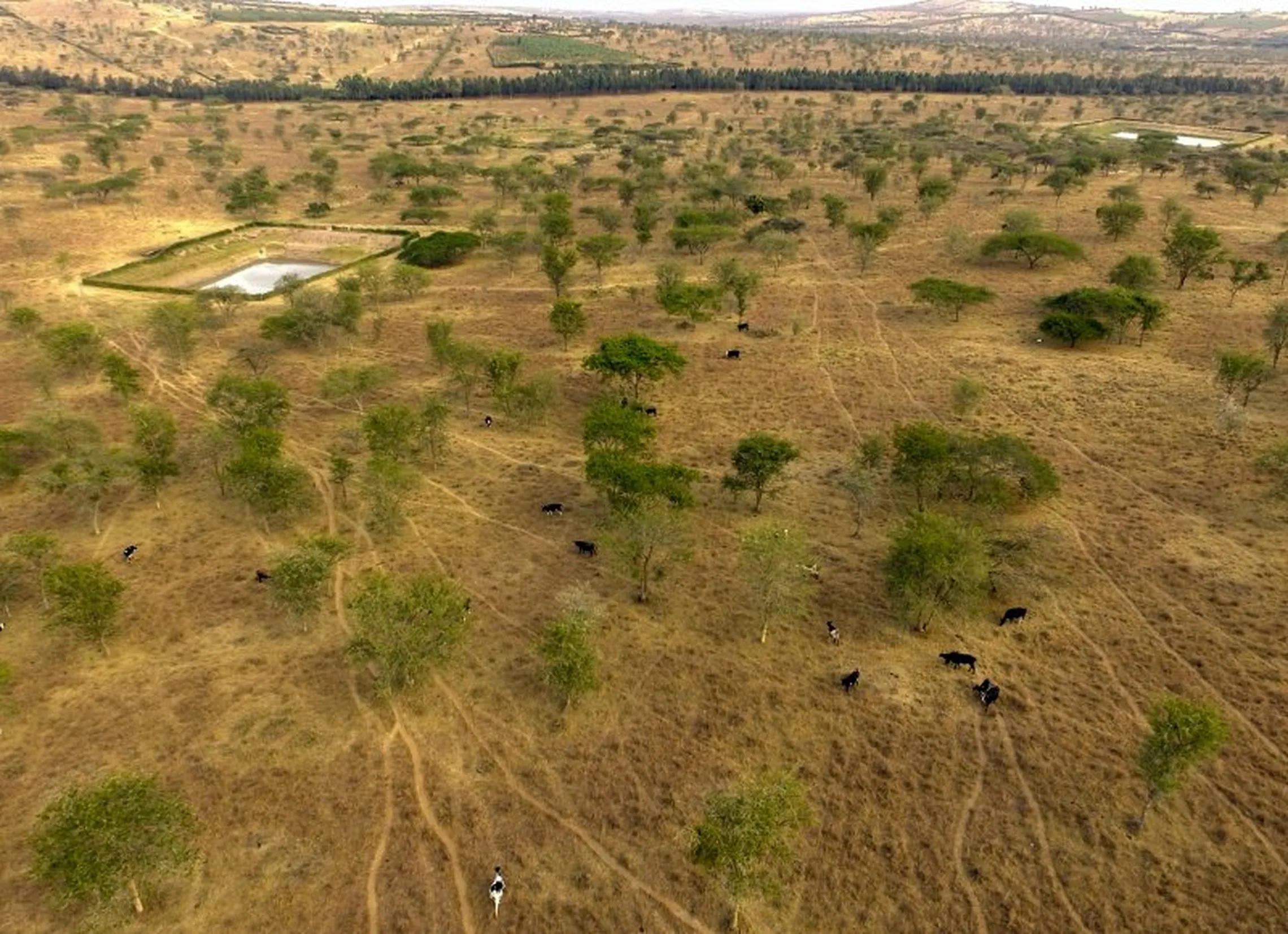TIDE: Stories of transformation - BM Investments

Today, SNV starts a collection of stories that highlight the transformation that the TIDE project is creating at farmer and private sector level. The first on BM Investments that started to provide comprehensive fencing and paddocking services.
The five year The Inclusive Dairy Enterprise (TIDE) project in Uganda (funded by the Embassy of the Kingdom of the Netherlands) aims to improve incomes for 20,000 dairy farmers in the districts of Bushenyi, Isingiro, Kiruhura, Mbarara, Ntungamo and Sheema. Now in its third year, the project is creating tangible results, having developed a number of relevant products and services for dairy farmers, delivered by the private sector.
A Win-Win Situation for BM Investments and dairy Farmers
BM Investments is a family owned business that has been operational since 1984. The company built its business around supplying electrical poles and mail wire fences, and providing treated timber to the construction industry. The company largely operated comfortably as a monopoly, acquiring trees to process and selling fencing poles to walk-in clients with no extra after sales service from the company.
"At the time, farmers who came to buy fencing poles bought their poles with no guidance from us on what they were going to use their poles for or analysis of their need. We simply sold them the poles and it didn’t matter whether they bought more poles than they actually needed." Theodora, the Executive Director of BM Investments reflects. Average annual sales from the treated fencing poles stayed at 35,000 poles annually earning the company 210 million Uganda shillings (€46,000) in gross revenue, a number the company was comfortable with.
In the last two years, the company saw a dip in the sales of selected products. The demand for its fencing wire products slowed down significantly and the company was halt sales. At the same time, SNV was looking for service providers that had a comprehensive knowledge of paddocking and fencing and that could provide dairy farmers with treated poles, but our efforts to find providers that could provide paddocking services and convince farmers to carry out paddocking had been largely futile. Initial contact to engage BM Investments had also failed and we had almost given up on offering the service as a part of the TIDE project, until Theodora returned from her training oversees and decided to partner with SNV to market the product.

Opened land, ready for paddocking
SNV then trained employees of the company on effective paddocking and proper paddocking levels. Through a partnership with NARO, SNV supported BM Investments to develop guidelines for paddocking and fencing to address the existing knowledge gap with smallholder famers and to provide them with technical assistance to effectively utilise their pastures.
BM Investments initial venture into paddocking and fencing, met a number of challenges. "Our first experience of providing poles was with a young farmer called Ronald Mugisha. When we had our initial discussions with him, we realised he did not have a proper awareness of the number of poles or paddocks he needed on his farm. We realised that to be able to effectively support farmers in paddocking and fencing, we needed to map farms to guide our discussions. That was our light bulb moment. We had to change our business model to move beyond simply selling fencing poles, to providing complete solutions that include farm planning. Without a farm map, which is generated through a GIS survey, we would not be able to comprehensive services to farmers and would not be giving them a solution that fits their situation and that can help them gain control over grazing and properly manage their pastures. These steps are critical for them to be able to increase their milk production.” Theodora elaborates.
BM Investments now requires all clients interested in paddocking and fencing their farms, to first carry out farm planning. The company uses the generated information to create a farm map that informs their offer for paddocking and fencing based on the proper determination of the farmer’s acreage. For dairy farmers that have largely managed their farms by instinct, adapting their practices to climatic conditions, the farm maps are a welcome innovation. They are no longer passive actors in their business but can become active participants with a clear direction. They can justify why specific structures like milking parlour, calf pens, water troughs, and paddocks have to be allocated where they are because the farm map guides them.
In the last six months since they changed their business model, BM Investment has more than doubled their sales, selling 80,000 poles to 100 farms, earning the company 480 million UGX (€110,000) in gross revenue. The company now is optimistic about the future. "The next three years are going to be good for us as long as we are able to continue to provide farmers with comprehensive services that go beyond selling fencing poles. Our target for 2018 is to sell 256,000 poles to 326 farms and we know that we can achieve this.” Theodora states with optimism in her voice.
To help them achieve their goals, the company intends hire additinal staff by tapping into the pool of skilled young people that the SNV TIDE project has helped establish to stimulate youth employment. In the initial phase BM Investments will engage nine young people: four of them skilled to carry out GIS mapping and interpret data, five trained to carry out paddocking and fencing services.
The company also plans to start a Eucalyptus tree planting campaign in local communities to replenish the trees that have been felled for the production of fencing poles. "We are looking into providing free tree seedlings to communities to replace what we are buying.” Theodora says, as we conclude our meeting.
For more stories of the TIDE project in the media, please click the link

